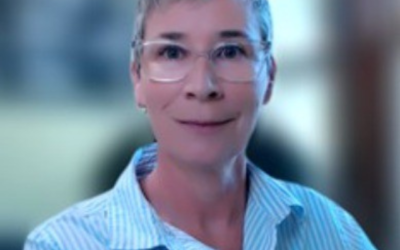Reversing Boston’s Child and Family Homelessness Crisis
FAB President Larry Seamans on this year’s alarming Federal Homeless Census
Each year, the U.S. Department of Housing and Urban Development releases a nationwide, state-by-state, city-by-city assessment of homelessness. This year’s recently released report reflects what FamilyAid Boston staff have tackled over the past few years – Massachusetts and Boston are facing a family homelessness crisis of epidemic proportions.
Between 2007 and 2019, family homelessness in Massachusetts increased by 69% – the largest percent increase in the nation. And, while the data shows individual adult homelessness has decreased since 2018, family homelessness in Massachusetts increased by another 5%[1].
The situation in the City of Boston is even worse. Although Boston is the 21st most populous city in the nation, it has the 3rd highest number of people in families experiencing homelessness nationally. In fact, every night, more than 3,850 people in families are living in shelters, cars, and emergency rooms in Boston, and at least 60% of them are children[2]. That’s 2,300 homeless children, a number large enough to fill Boston Children’s Hospital five and a half times over on any given night. Hundreds of other Boston families are illegally doubled up in overcrowded apartments and are not included in the federal homeless census but are counted by the Boston Public Schools. Their data shows there are an additional 3,000 children living in unstable housing situations.
These numbers may be surprising to many: We don’t see homeless parents and children on the streets, so family homelessness is an issue that goes largely unnoticed and ignored. Instead of sleeping under bridges or sheltering in train stations, Boston’s homeless families are hidden from the public eye in the state’s shelter system or take refuge out of sight in cars, hotels, hospital emergency rooms, or on a friend’s couch.
How did we get here?
The shocking number of homeless children and parents is directly connected to the dramatic rising costs of housing and child care and stagnating wages for the working class.
More than 21,000 families within the city are living at the poverty line, with tens of thousands more families living well below the median $90,000 income needed to have a stable home and family life [3].
In order to afford a 2-bedroom apartment at fair market rent in Massachusetts, a parent working a minimum wage job would need to work 113 hours or 2.6 full-time jobs each week[4]. These hours don’t account for the additional hours a parent would need to work to cover expenses like groceries, transportation, or medical bills.
Then there’s the cost of childcare which creates an even larger financial burden. Massachusetts is the state with the most expensive childcare in the nation. In Massachusetts, infant care costs $8,000 more per year than in-state tuition for a four-year public college. For two children, childcare costs are even more substantial. One year of childcare for two children can total over $36,000. The U.S. Department of Health and Human Services states that childcare should cost no more than 7% of total household income, yet for a single parent working a minimum wage job, childcare for two children would account for more than an entire year’s salary[5].
Where do we go from here?
At FamilyAid Boston, we recognize the invisible crisis in front of us, which is why we are doggedly working daily to reverse the direction of family homelessness.
Over the past year, we have drastically expanded our homeless prevention efforts, a cost-effective and less trauma-inducing strategy to help struggling families. The cost of providing one family with shelter and support services is $40,000 a year but preventing that same family from falling into homelessness costs only $1,500 on average. And while these savings are substantial, the cost of a child’s wellbeing is incalculable. By preventing a family from becoming homeless we can prevent the trauma and tragedy experienced by children while also lowering the state’s shelter costs.
While we work to catch more families before they fall into homelessness, we also know preventing homelessness is not enough as thousands of families in our area are already homeless. Our staff are working tirelessly to accelerate families’ safe permanent departures from our 123 shelter units to stable housing and ensuring they have our support to maintain their housing over the long term. Our results are promising with a reduced length of shelter stay 15% below the state average of 13 months, and long-term housing retention rates of more than 98 percent.
FamilyAid Boston also continues to advocate for more low-income housing for families at both the state and local level. Beyond housing, FamilyAid Boston is expanding services to better support children and reduce the trauma of homelessness.
While this year’s federal homelessness data is sobering, FamilyAid Boston intends to reduce the number of children and parents facing homelessness by half within the next five years and to markedly improve children’s well-being on their path to a more successful adulthood.
[1] https://files.hudexchange.info/resources/documents/2019-AHAR-Part-1.pdf
[2]https://www.baruch.cuny.edu/nycdata/world_cities/largest_cities-usa.htm
[3] Boston Planning & Development Agency Research Division. (2018, September). Boston by the Numbers 2018. Boston Plans http://www.bostonplans.org/getattachment/3e8bfacf-27c1-4b55-adee-29c5d79f4a38
[4] https://reports.nlihc.org/sites/default/files/oor/OOR_2019.pdf
[5] https://www.epi.org/child-care-costs-in-the-united-states/#/MA



